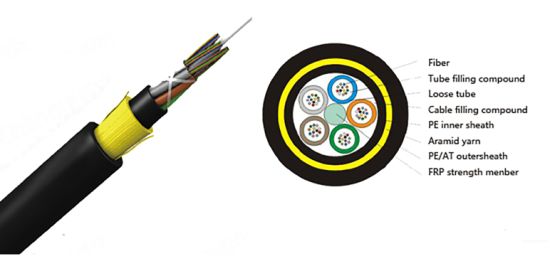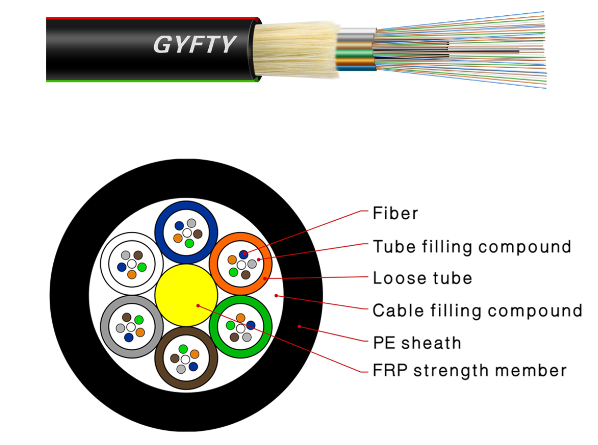In the realm of non-metallic optical cables, two popular options have emerged, namely ADSS (All-Dielectric Self-Supporting) cable and GYFTY (Gel-Filled Loose Tube cable, Non-Metallic Strength Member). Although both serve the purpose of enabling high-speed data transmission, these cable variants possess distinct characteristics that set them apart. Let's delve into the details and explore the differences between ADSS and GYFTY cables.
ADSS cables, as their name suggests, are designed to be self-supporting, eliminating the need for additional metallic or messenger support. These cables are composed entirely of dielectric materials, typically aramid yarn and high-strength fibers, making them lightweight and resistant to electrical interference. ADSS cables are widely used in applications where aerial installation is required, such as spanning over long distances between utility poles or along transmission lines. Their construction ensures they can withstand the tensile forces exerted on them without sagging, maintaining a stable position over time.
n the other hand, GYFTY cables are gel-filled loose tube cables that incorporate a non-metallic strength member, often made of fiberglass. The loose tubes within the cable hold the fiber optic strands, providing protection against moisture and mechanical stress. GYFTY cables are suitable for various installation environments, including underground and direct burial applications. They offer enhanced durability and are capable of withstanding harsh conditions, making them a reliable choice for outdoor installations.
When it comes to installation and maintenance, ADSS cables excel in their ease of deployment. Since they are self-supporting, they require minimal additional infrastructure. ADSS cables can be installed on existing power distribution lines, reducing the need for dedicated poles and decreasing the overall project cost. Additionally, their lightweight nature simplifies handling and reduces the strain on supporting structures during installation.
In contrast, GYFTY cables are more commonly used in scenarios where the terrain demands greater protection. Their gel-filled construction ensures the fiber optics remain shielded from water ingress and moisture-related damage. The presence of the non-metallic strength member provides added reinforcement, making GYFTY cables highly resistant to external pressures, such as impact or crushing forces.
Both ADSS and GYFTY cables offer excellent data transmission capabilities, supporting high bandwidth requirements and maintaining signal integrity over long distances. The choice between the two largely depends on the specific installation requirements and environmental conditions.
As the demand for reliable and efficient data transmission continues to rise, understanding the characteristics and distinctions between ADSS and GYFTY non-metallic optical cables becomes increasingly important. By making informed decisions about cable selection, network planners and installers can ensure optimal performance and longevity of their optical infrastructure.



